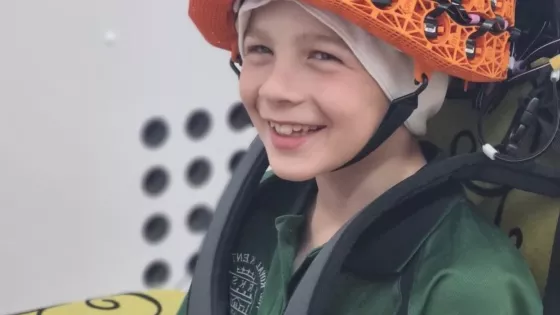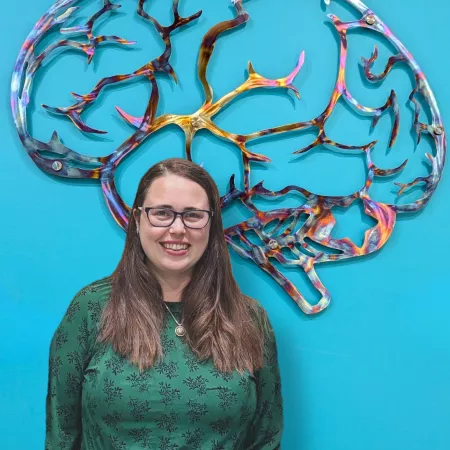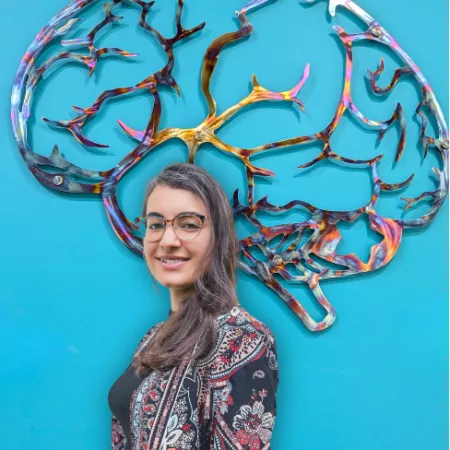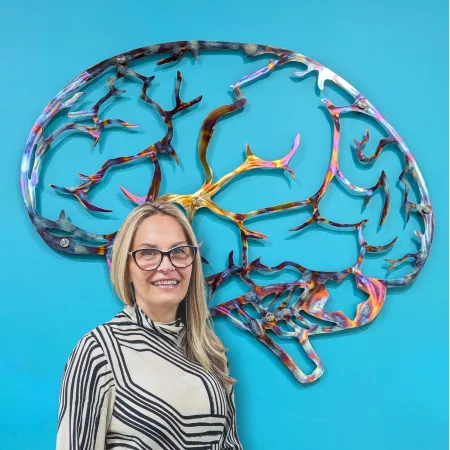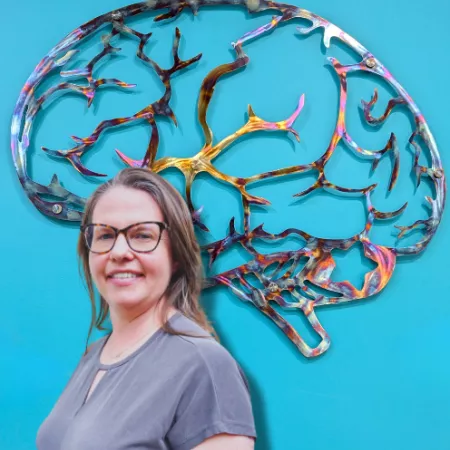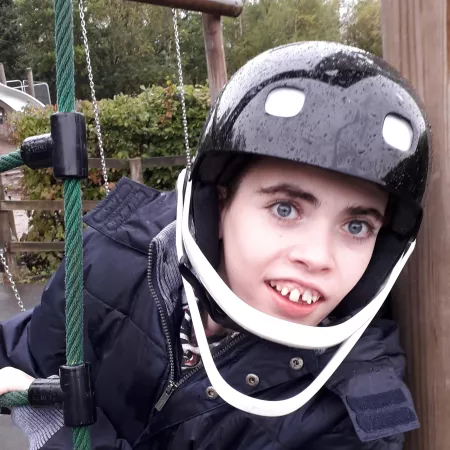We coordinate epilepsy research that improves diagnosis and treatments for children and young people, putting them at the heart of everything we do.
The cutting edge of epilepsy diagnosis
OPM-MEG technology transforms epilepsy diagnosis into a much gentler, less intrusive experience, allowing for more accurate data collection, earlier diagnosis and interventions, and better management, treatment and health outcomes.
Optically pumped magnetoencephalography (OPM-MEG) is the result of a collaboration between Young Epilepsy’s Research team and the University of Nottingham, University College London's Institute of Neurology, the UCL Wellcome Centre for Human Neuroimaging, Cerca Magnetics and Magnetic Shields Ltd.
What is magnetoencephalography?
Magnetoencephalography (MEG) is a neuroimaging tool that records naturally occurring brain function by measuring minute changes in magnetic fields produced as brain cells communicate. MEG and EEG are often the first step in epilepsy diagnosis. MEG is a vital part of neurological diagnostics and surgical evaluation. The technology has been available for many years, but with limitations.
What is OPM-MEG?
Optically pumped magnetoencephalography (OPM-MEG) is the world’s first wearable, movable, brain-imaging system. OPM-MEG uses sensors embedded in a helmet designed specifically for children. It is 10 times more sensitive than current MEG technology. OPM-MEG offers earlier and more accurate diagnosis through better-quality data, allowing for earlier intervention, and better treatment options and outcomes for children.
Why is early diagnosis important?
Around half of people diagnosed never learn what causes their epilepsy. But the sooner we know the cause of someone’s epilepsy, the sooner we know how it is affecting them, and how best to manage and treat it. Early diagnosis is also better for the person’s understanding of their condition.
Why is early intervention important?
The longer a child has undiagnosed and untreated epilepsy, the longer they are at risk of neurological damage. Also, people with epilepsy often have other developmental needs. Early intervention from a range of health care professionals can, therefore, be critical to improving health outcomes and quality of life for children with epilepsy.

